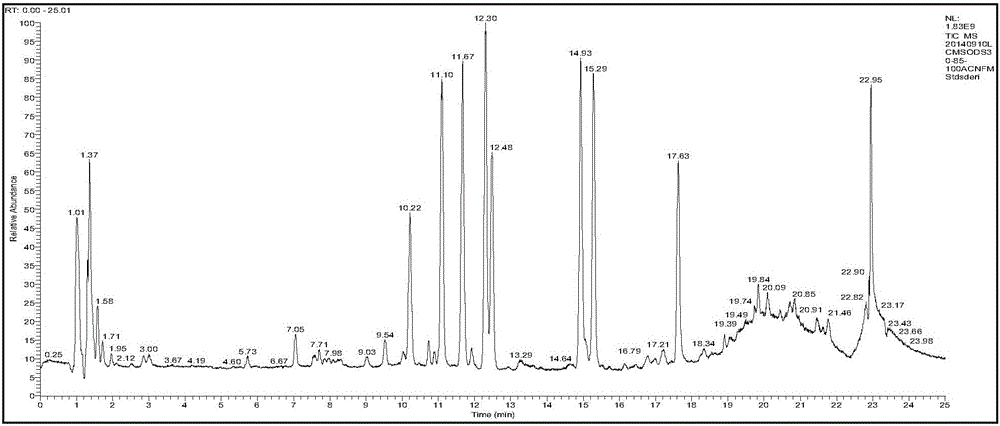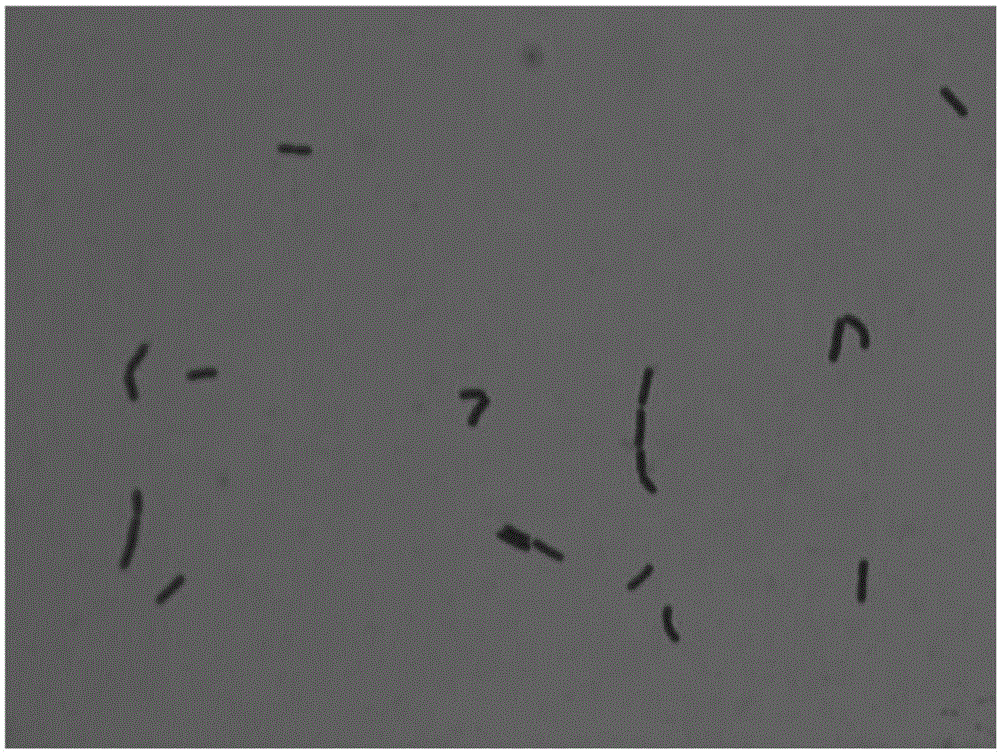Lactobacillus plantarum with function of reducing contents of biogenic amines in foods and application of lactobacillus plantarum
A technology of Lactobacillus plantarum and biogenic amines, which is applied in the field of microorganisms, can solve the problems of high cost, few types of biogenic amines, and doubtful safety, and achieve good fermentation potential, wide application prospects, and rapid acid production.
- Summary
- Abstract
- Description
- Claims
- Application Information
AI Technical Summary
Problems solved by technology
Method used
Image
Examples
Embodiment 1
[0027] Embodiment 1 Lactic acid bacteria screening and preservation
[0028] The pickle water of high-quality pickles from the Neijiang area of Sichuan is gradiently diluted with sterile saline, and an appropriate gradient is selected in the MRS broth added with 1.5% bromocresol purple solution (the concentration of bromocresol purple solution is 0.5%) Cultivate on medium, cultivate at 37°C for 48 hours, pick colonies with large color change circles and inoculate them into MRS liquid medium for static cultivation for 24 hours at 37°C. Take 1 mL of the cultured bacterial solution into a bacterial preservation tube, centrifuge at 12,000 rpm at 4°C for 2 minutes, take the supernatant, add 1 mL of 60% glycerol to the precipitate to resuspend, and store at -80°C.
Embodiment 2
[0029] Example 2 Degradation test of Lactobacillus plantarum CGMCCNO.9740 on biogenic amine
[0030] 1. Activation of Lactobacillus plantarum CGMCCNO.9740 strain
[0031] Take the Lactobacillus plantarum CGMCC NO.9740 stored at -20°C and streak it on the MRS plate. After culturing at 37°C for 48 hours, pick lactic acid bacteria cells from well-grown Lactobacillus plantarum colonies and inoculate them into MRS liquid medium for static culture at 37°C for 24 hours.
[0032] 2. Preparation of mother liquor of biogenic amine standard
[0033]The biogenic amines are standard products of biogenic amines, which are purchased from Sigma Company and prepared into a mother liquor with a concentration of 100 mg / L of each biogenic amine during use. The preparation method is: accurately weigh 0.0100mg of tryptamine, phenylethylamine, putrescine, cadaverine, histamine, tyramine, spermidine and spermine, dissolve in 100mL sterile normal saline, mix well and dissolve , and stored at 4°C af...
Embodiment 3
[0053] Embodiment 3 Morphology and identification result of Lactobacillus plantarum CGMCCNO.9740
[0054] Take the Lactobacillus plantarum CGMCC NO.9740 preserved in the glycerol tube at -80°C, and streak it on the MRS plate. After culturing at 37°C for 48 hours, it can be observed that the colony is milky white in shape, smooth and wet on the surface, with smooth edges, see figure 2 , observed under a 40×100 times microscope after Gram staining, it can be seen that Lactobacillus plantarum CGMCC NO.9740 is a rod-shaped Gram-positive bacterium, see image 3 .
[0055] Carry out colony PCR, use a sterile toothpick to pick a single colony into the mixed system, and react in a PCR machine. The system includes: 5 μL of 10×TaqBuffer, 4 μL of 2.5 mMdNTPs, 0.5 μL of 5u / μL Taq DNA polymerase, 0.5 μL of 20 μM upstream and downstream primers (16S universal primers 27F and 1492R), 38.5 μL of sterile water. The reaction program is: 94°C, 5min→(94°C, 30s→50°C, 30s→72°C, 1min)×30 cycles→...
PUM
| Property | Measurement | Unit |
|---|---|---|
| thickness | aaaaa | aaaaa |
Abstract
Description
Claims
Application Information
 Login to View More
Login to View More - R&D
- Intellectual Property
- Life Sciences
- Materials
- Tech Scout
- Unparalleled Data Quality
- Higher Quality Content
- 60% Fewer Hallucinations
Browse by: Latest US Patents, China's latest patents, Technical Efficacy Thesaurus, Application Domain, Technology Topic, Popular Technical Reports.
© 2025 PatSnap. All rights reserved.Legal|Privacy policy|Modern Slavery Act Transparency Statement|Sitemap|About US| Contact US: help@patsnap.com



